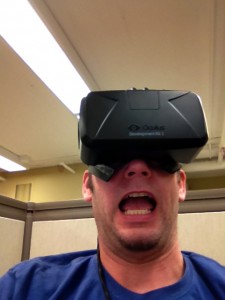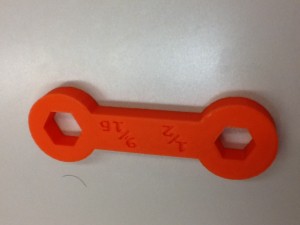Before enrolling is this course, transnationalism was a theoretical context I had encountered previously in a graduate seminar, but never realized how it directly applied to my life outside of literature. Currently, after a dynamic semester of engagement with how interconnectivity between global contexts functions, I observe, experience, teach, and reflect on transnationalism on a daily basis, particularly in my profession as a foreign language teacher. Not only do I consider how transnational contexts posit my role as an educator in the 21st century, but also how they can improve upon the way I teach German. For example, how can new transnational technology resources enhance the foreign language learning process? Although transnationalism is applicable to many spheres, it seems to currently occupy a front row seat in my educational life.
At the beginning of the semester, the introductory text by Appadurai Modernity at Large and his framework of various “scapes” enabled me to reframe my perception of how my work and learning environments are part of the “new global cultural economy.” Appadurai’s ethnoscapes, or the “landscape of persons who constitute the shifting world in which we live” appeared to adequately describe the diverse individuals that I work with and teach in suburban Washington DC. With citizens from around the world in my environment who may fluently speak other languages in addition to English, one question that I often found myself asking was, “How does knowledge of other languages assist with learning languages such as German?” When I posited this question to co-workers and students, especially those that spoke Spanish, French, and Russian, I found that “grammar” was the most common answer. Another discussion that arose with colleagues was different methods or traditions of teaching foreign languages and adjustments that may be needed by foreign teachers in the American cultural context. One colleague mentioned how the grammar/translation method is quite common in Eastern Europe, but is rarely used in North America. In addition, several co-workers mentioned their amazement at the change in foreign language offerings in secondary school in this particular metropolitan area. While French, and Spanish remain popular, languages such as German and Latin are slowly being replaced by Arabic, Chinese, or Korean for an anticipated need in the “global economy” of the future.
Technoscapes, or the “the global configuration of technology…which now speeds across various kinds of previously impervious boundaries” was also influential in my new line of thinking. In particular, I reflected on how virtual spaces, such as learning platforms, social media, and communication devices, have facilitated communication across borders. In today’s German language classroom, students can chat on Skype with a Swiss peer, watch a music video in German on YouTube, or take a test online. Learning possibilities with both ethnoscapes and technoscapes seem endless, and I often wonder how it will evolve further as advances are made (Appadurai 329-331).
As our seminar began to discuss transnational cinema in November, I considered how to apply this transnational framework to my teaching of German films in upper level language classes. Ezra and Roden’s definition of transnational cinema as one that arises in the “interstices between local and global” and which has the ability to “foster bonds of recognition between groups” created room for thought (Ezra & Roden 4) Shortly before Thanksgiving, in collaboration with my German colleague, we decided to show Sandra Nettelback’s 2003 Bella Martha to our fourth year German sections.
The story of a workaholic chef in Hamburg, who also engages with Italian culture, citizens, and cuisine, facilitated many examples of curricular transnationalisms. In terms of thinking locally, students made cross-cultural connections between American restaurants and cuisine with the German ones depicted in the film. In terms of thinking globally, students were able to compare and contrast German-Italian culture with German-American and/or American-Italian culture. While many cultural nuances relating to Italy were similar, others, such as work culture were vastly different. While the idea of a “workaholic” chef was not surprising to American students due to the typical American work culture, students were amazed to learn that this is rare in Germany or Italy. Thus, the negative reaction of Martha’s co-workers and acquaintances made more sense against this cultural backdrop.

Bella Martha (2002) by Sandra Nettelback
In addition, Ezra and Roden’s discussion of “Hollywoodization” came into focus, especially when several students mentioned having previously seen the American remake of Bella Martha, Scott Hick’s 2007 film No Reservations, without realizing its German origin. Within this framework, students could simultaneously compare cultural nuances of how films are made in different countries. Interestingly, in concurrence with Ezra and Roden’s analysis of American films, students noted the “universalization” of American culture, while the German film seek to evoke more “truth” in relation to German/Italian cultural contexts.
No Reservations (2007) by Scott Hicks
While Appadurai and Ezra & Roden have shaped my work environment perception and teaching methods in new ways, other transnational frameworks continually interest me and I hope to peruse them in the future when time allows. For example, last’s week discussion on the Berlin School and Halle’s article on “German Film after Germany” were intriguing and provided some teaching ideas on how to frame Germany culture, society, and politics in the 21st century, especially after the 25th anniversary of the fall of the Berlin Wall.

